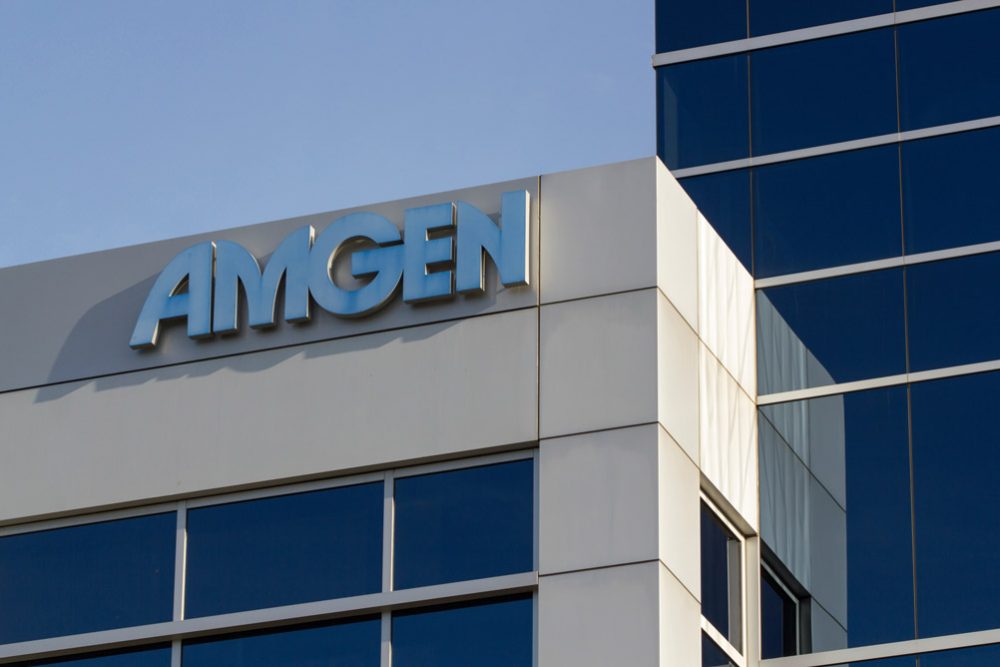Advertisment
New research on Otezla in psoriatic arthritis presented at EULAR 2023 – Amgen

Amgen announced new research examining the use of Otezla (apremilast) in psoriatic arthritis, including the Phase IV MOSAIC study and an exploratory analysis of cardiometabolic risk factors, which are commonly elevated in patients with psoriatic disease. The findings will be presented at the 2023 European Congress of Rheumatology (EULAR), taking place May 31-June 3 in Milan, Italy.
“Research presented at EULAR sheds new light on psoriatic arthritis and the role of our oral medication Otezla,” said Ponda Motsepe-Ditshego, vice president, Global Medical at Amgen. “Using MRI, the MOSAIC study visually captured an improvement in inflammation and no significant change in structural progression, with the effects being greater in patients with moderate as opposed to high disease activity.”
MOSAIC Phase IV Study : Unlike X-ray imaging – commonly used to assess joint damage caused by psoriatic arthritis – MOSAIC used magnetic resonance imaging (MRI), a more sensitive tool for imaging inflammation, which begins early and continues throughout the disease course in joints and entheses (sites where tendons or ligaments attach to bones). MOSAIC evaluated Otezla’s effect on joint inflammation and structural progression of psoriatic arthritis measured by MRI.
“MOSAIC is the first study to use MRI to assess inflammation in peripheral joints and entheses in a clinical trial, and shows MRI offers a promising way to measure inflammatory disease activity in patients with this condition,” said Professor Mikkel Østergaard, M.D., Ph.D., DMSc, Copenhagen Center for Arthritis Research, Center for Rheumatology and Spine Diseases, Rigshospitalet, University of Copenhagen in Copenhagen, Denmark. “The results of this study are encouraging, as they provide important insights about Otezla treatment and its efficacy on both clinical and inflammatory manifestations of psoriatic arthritis.”
In MOSAIC, a multicenter, single-arm, open-label study, patients with active psoriatic arthritis who were treated with Otezla for 48 weeks had MRI of the hand (contrast-enhanced) performed at baseline, week 24 and week 48. The study evaluated change from baseline in the composite score of hand bone marrow edema (BME), synovitis and tenosynovitis in fingers assessed by the psoriatic arthritis MRI score (PsAMRIS) at week 24 (the primary endpoint). Total inflammation score, comprised of BME, synovitis, tenosynovitis and periarticular inflammation in fingers, as well as structural progression, were also assessed.
Patients treated with Otezla had improvements in both clinical and MRI measures of inflammation up to week 48. Detailed findings include : i. Inflammation improved, reflected in the mean change from baseline in the composite inflammation score of BME, synovitis, and tenosynovitis as assessed by PsAMRIS for the full analysis set (n=98), which was -2.32 (-4.73, 0.09) at week 24 and -2.91 (-5.45, -0.37) at week 48. Significant improvements at week 24 and 48 in the per protocol population (n=94) were also observed. ii. No significant structural progression was observed with Otezla. Total damage score – a measure of disease progression – including bone erosion, showed no significant change at weeks 24 and 48. iii. In addition, patients with moderate disease activity as measured by Clinical Disease Activity Index for Psoriatic Arthritis (cDAPSA) experienced greater reductions in inflammation with Otezla as compared to those with high disease activity. iv. Common treatment-emergent adverse events were diarrhea (33.6%), nausea (12.3%), headache (10.7%), nasopharyngitis (7.4%) and dyspepsia (6.6%). v. Findings will be presented Friday, June 2 at 12:10 p.m. CEST: POS0226, Poster Tour Session: “Apremilast Reduces Inflammation as Measured by MRI of the Hand in Patients with Psoriatic Arthritis: Primary Results from the Phase 4 MOSAIC Study”.
Otezla’s Effect on Cardiometabolic Parameters in Psoriatic Arthritis : A second EULAR presentation includes data evaluating the effects of Otezla on cardiometabolic parameters (low- and high-density lipoprotein [LDL, HDL], body mass index [BMI] and HbA1c levels) in 781 patients with psoriatic arthritis at 52 weeks. The post-hoc exploratory analysis of data from five pooled Phase III trials (PALACE 1-4, ACTIVE) showed Otezla treatment was associated with improvement in cardiometabolic parameters across psoriatic disease activity groups.
Among the findings reported : i. Mean LDL in the overall population at baseline decreased by 2.0 mg/dL on average at week 52; 52.3% of patients moved from the high LDL category ( greater than 160 mg/dL) at baseline to borderline (>129 – <160 mg/dL) or normal ( greater than 129 mg/dL) at week 52; and 38.3% changed from borderline high to normal LDL levels. ii. Mean BMI was 30.3 kg/m2 in the overall population at baseline and decreased by 0.5 kg/m2 at week 52; 9.0% of patients changed from the obese category ( greater than 30 kg/m2) to the overweight category (25 – <30 kg/m2) and 12.3% of patients changed from the overweight category to the normal category (<25 kg/m2) iii. 50.4% of patients who had prediabetes changed to normal HbA1c levels and 40.0% moved from diabetes to prediabetes at week 52.Findings will be presented Saturday, June 3 at 10:30 a.m. CEST: POS1527, Poster Session:” Effects of Apremilast on Changes in Cardiometabolic Parameters by Diabetes and Obesity Status in Patients with Psoriatic Arthritis”.





